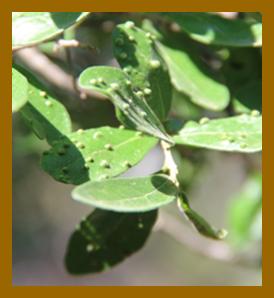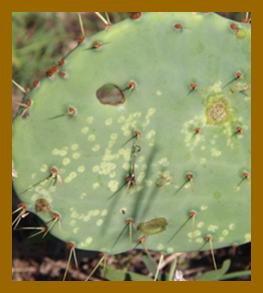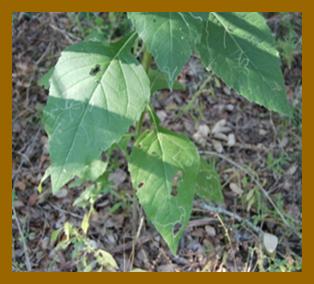Guide to SA Natural Areas & Greenway Trails
R: Area Insects
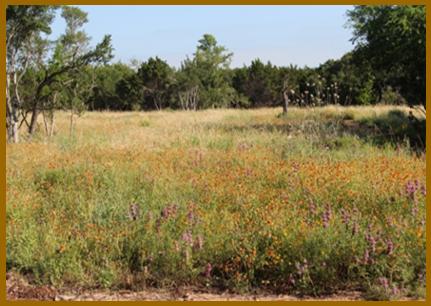
An area like this is a great place to find pollinating insects like butterflies, wasps, and bees.
Written and all photos by Molly Keck of the Texas AgriLife Extension Service and by Alexa Ortiz, Texas A&M University intern.
INSECTS ARE EVERYWHERE
Insects are everywhere. They are found along the Oak Loop Trail. They can be found on the ground, in trees, under rocks, and on plants. Insects have six legs, three distinct body parts, and one pair of antennae. Most insects have wings, so they are usually seen flying around in fields or gardens. The majority of insects are beneficial to us and the environment; only a small percentage are harmful.
MOST ARE BENEFICIAL
When is the best time to find insects?
Insects are found year-round. The best times to find insects are in the fall (September-October) and in the spring (March-April). This is especially the case for butterflies. The best times of day to find insects are early morning and late afternoon – times when the sun is low and the temperatures are cooler.
What types of insects can be seen on this trail?
Many different types of butterflies can be found - - swallowtails, sulfurs and brushfooted butterflies. A good place to find butterflies is in open areas with many flowering plants. Wasps and bees are also present in open, sunny areas with many flowering plants. Butterflies, wasps, and all species of bees are excellent pollinators.
MANY ARE POLLINATORS
Along the trail you may come across ground beetles. Many people do not realize beetles are important pollinators.
CLUE #1: SPOTS
You may not always be able to see insects, but you can find clues that they are present. For example, sap-sucking insects leave marks on the plants where their mouthparts were inserted. Look on cacti for spots. These were probably made by leaf-footed bugs, which use cacti as host plants.
CLUE#2: GALLS
Galls can be found on leaves of various tree and shrub species. Galls are formed by the plant as a reaction to insects feeding or laying their eggs in the leaf tissue. Galls may be unsightly, but since the gall itself is plant material, no damage is done to the plant.
CLUE #3: HOLES
Another type of damage is holes in plants. Holes are caused by caterpillars, grasshoppers, beetles, snails, slugs, and (rarely) millipedes. These are the few plant-feeding insects that have chewing mouthparts. Leaf miner damage is also present along the trail. Leaf miners may be wasps, flies, or beetles. They lay their eggs in the leaf tissue; the larvae burrow inside the leaf, leaving a trail or mining damage.
Insects are present throughout the park and other natural areas. They are small and well-camouflaged and often hide from view. But look carefully, and you will see an entire world of creepy crawlers around you!
Common insects in the park: left to right or top to bottom: Leaf-footed bug (nymph), Hackberry Butterfly, Skunk Beetle.
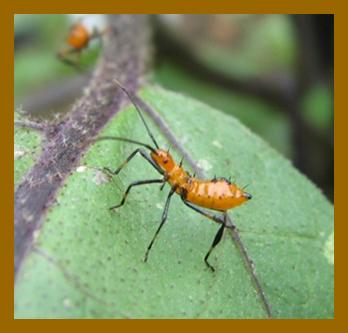
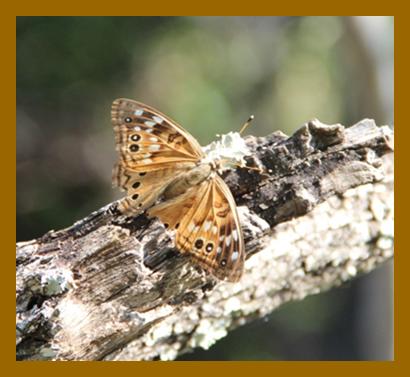
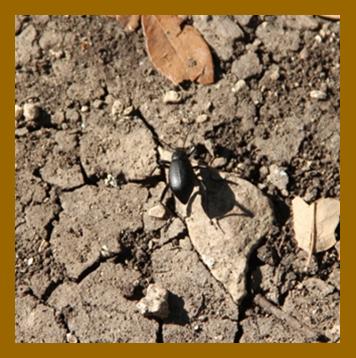
Evidence of insects: left to right or top to bottom: Leaf galls on persimmon, Leaf-footed bug feeding damage on cactus pad, and evidence of leaf miners and caterpillars.
